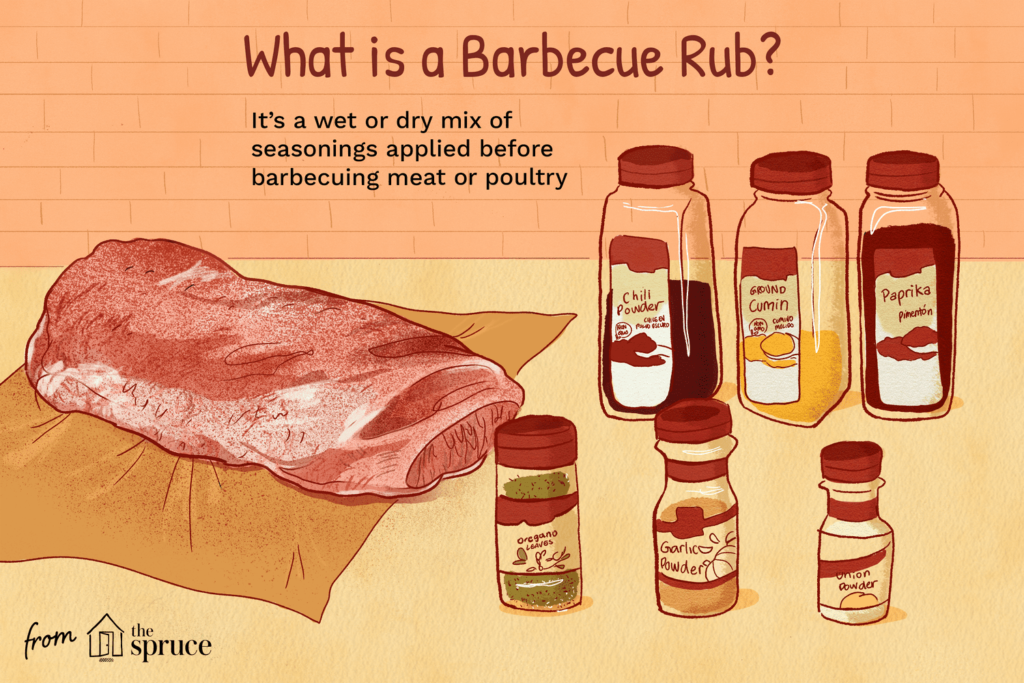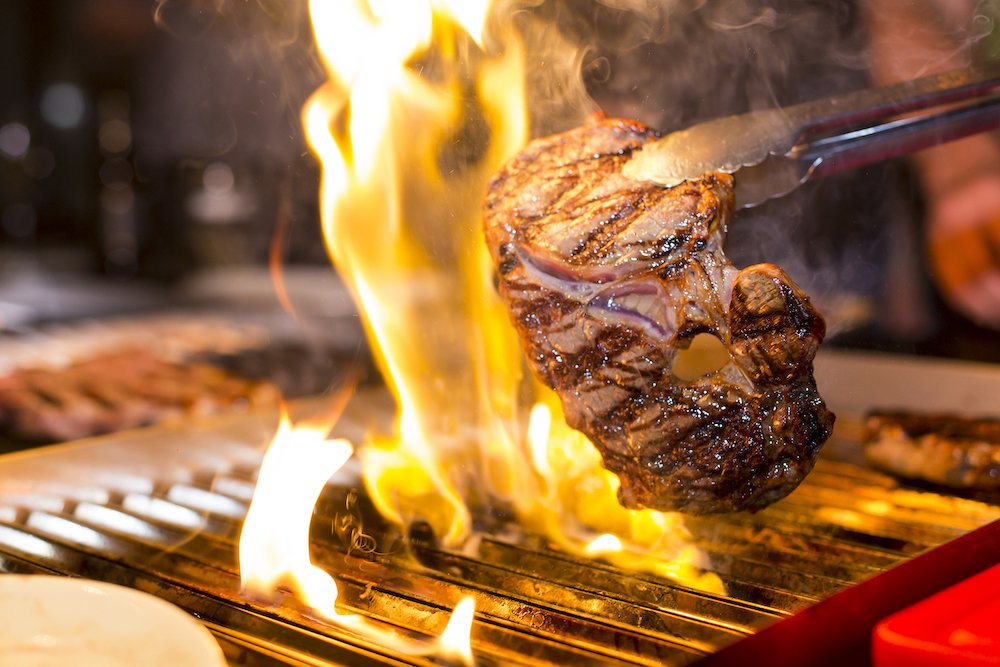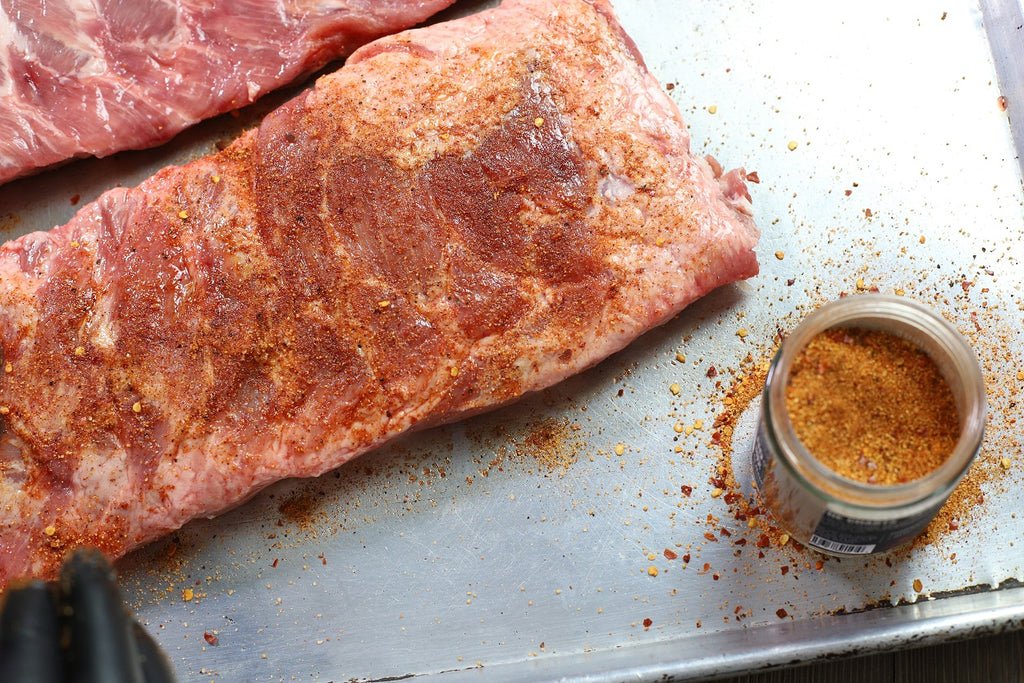In this friendly guide, we will walk you through the art of customizing rubs for different BBQ equipment. Whether you’re a seasoned grill master or just starting out, understanding how to tailor your rubs to the specific equipment you’re using can make a world of difference in the flavor and tenderness of your meats. From gas grills to charcoal smokers, we’ll provide you with practical tips and techniques to create mouthwatering barbecue that will have everyone asking for seconds. So, get ready to elevate your grilling game with our expert advice on customizing rubs for different BBQ equipment.
Understanding the Importance of Rubs
When it comes to barbecue, a good rub can make all the difference in creating a mouthwatering and flavorful dish. Rubs serve three primary purposes: flavor enhancement, tenderizing, and crust formation. The combination of various spices, herbs, and other ingredients in rubs adds depth and complexity to the final product.
Flavor Enhancement
One of the main reasons rubs are used in barbecue is to enhance the flavor of the meat. A well-balanced rub can bring out the natural flavors of the meat while adding a delicious combination of aromas and tastes. The spices and herbs in the rub can complement the meat and create a harmonious blend of flavors that is truly irresistible.
Tenderizing
Rubs also play a role in tenderizing the meat. Certain ingredients like salt, enzymes, and acids in rubs help to break down the proteins in the meat, resulting in a more tender and succulent texture. This is particularly important for tougher cuts of meat that require longer cooking times. The combination of the right rub ingredients can work wonders in transforming a tough piece of meat into a tender and juicy masterpiece.
Crust Formation
Finally, rubs aid in crust formation. The mixture of herbs, spices, sugar, and salt in a rub creates a flavorful outer crust or bark on the meat. This crust not only adds visual appeal but also adds another layer of taste and texture to the dish. The caramelization of the sugar and the savory notes from the spices create a delicious contrast to the tender meat inside.
Types of BBQ Equipment
When it comes to barbecue, there are several different types of equipment you can use, each with its own unique characteristics. Understanding the different types of BBQ equipment can help you choose the right rub and cooking method for the best results.
Smokers
Smokers are traditionally used for low and slow cooking, creating tender and flavorful meat. These devices use indirect heat to cook the meat slowly over a long period of time, allowing the smoke to infuse the meat with a rich and smoky flavor. When using a smoker, it’s important to choose a rub with strong flavors that can stand up to the slow cooking process.
Charcoal Grills
One of the most popular types of BBQ equipment, charcoal grills offer a combination of direct heat and smoky flavor. The charcoal briquettes provide a consistent and controllable heat source, while the open flames add a delicious smoky taste to the meat. When using a charcoal grill, versatile rubs that complement a variety of meats and cooking styles work best.
Gas Grills
Gas grills are known for their convenience and ease of use. These grills use propane or natural gas to provide a consistent heat source, making them perfect for quick and easy meals. When using a gas grill, quick-searing rubs that create a flavorful crust in a short amount of time are ideal.
Electric Grills
Electric grills are a popular choice for those who live in apartments or areas where open flame grilling is not allowed. These grills use electricity to generate heat, providing a convenient and smokeless grilling option. When using an electric grill, low and slow rubs that can withstand longer cooking times work best.
This image is property of cdn.media.amplience.net.
Choosing the Right Rub Ingredients
The key to customizing a rub for your BBQ is choosing the right combination of ingredients. There are several key components to consider when selecting ingredients for your rub:
Salt
Salt is an essential ingredient in any rub, as it enhances the natural flavors of the meat and helps to tenderize it. Kosher salt or sea salt are often preferred for their milder flavor and ability to adhere to the meat’s surface.
Sugar
Sugar helps to create a caramelized crust on the meat and adds a touch of sweetness to balance out the flavors. Brown sugar, white sugar, or even honey are commonly used in rubs to achieve this effect.
Spices
Spices are the heart and soul of a rub, adding depth and complexity to the flavor profile. Common spices used in rubs include paprika, chili powder, cumin, garlic powder, and onion powder. Experimenting with different spice combinations can create unique and delicious flavors.
Herbs
Herbs add a fresh and aromatic element to rubs. Popular herbs used include thyme, rosemary, oregano, and parsley. They can be dried or fresh, depending on personal preference or availability.
Powdered Ingredients
Powdered ingredients such as mustard powder, cocoa powder, or coffee grounds can add depth and dimension to the rub. They provide unique flavors that can elevate the taste of the meat.
Acidic Ingredients
Acidic ingredients like vinegar, citrus juice, or Worcestershire sauce can add brightness and balance to the overall flavor of the rub. They can also help to tenderize the meat.
Umami Boosters
Umami is the savory taste that enhances the meaty flavors of the barbecue. Ingredients like soy sauce, tomato paste, or fish sauce can intensify the umami taste and create a rich and satisfying rub.
Balancing Flavors
Creating a well-balanced rub is crucial to achieving delicious barbecue. There are several key flavor categories to consider:
Sweet
A touch of sweetness adds depth and richness to the rub. It can come from ingredients like sugar, honey, or maple syrup. Balancing the sweetness with other flavors is important to prevent the rub from becoming overly sugary.
Salty
Salt is essential in balancing flavors and enhancing the natural taste of the meat. It is important to use the right amount of salt to avoid making the rub too salty.
Savory
Savory flavors can come from spices like paprika, cumin, garlic powder or herbs like thyme, rosemary, or oregano. These flavors add complexity and depth to the rub.
Spicy
Spices like chili powder, cayenne pepper, or black pepper can add heat and a spicy kick to the rub. Adjusting the level of spiciness allows you to customize the rub to your desired heat level.
Tangy
Tangy flavors add brightness and acidity to the rub. Ingredients like vinegar, citrus juice, or mustard can provide a tangy element that balances the richness of the meat.
Herbaceous
Fresh or dried herbs contribute a fresh and aromatic element to the rub. They add a layer of complexity and freshness that complements the meat.

This image is property of ux2cms.imgix.net.
Matching Rubs to BBQ Equipment
Choosing the right rub for your BBQ equipment can enhance the overall cooking experience and bring out the best flavors in your food.
Strong flavored rubs for smokers
When using a smoker, it’s best to use rubs with strong flavors that can stand up to the slow cooking process and infuse the meat with intense taste. Smoky spices like cumin, paprika, and chipotle can add depth and richness to the rub.
Versatile rubs for charcoal grills
Charcoal grills offer a wide range of cooking possibilities, so selecting a versatile rub that complements various meats and cooking styles is ideal. A combination of savory spices, herbs, and a touch of sweetness can create a rub that works well with different flavors.
Quick-searing rubs for gas grills
Gas grills are known for their quick and efficient searing capabilities. To maximize the flavor in a short amount of time, a rub with spices that create a flavorful crust is recommended. Spices like black pepper, cayenne pepper, and garlic powder can add a punch of taste.
Low and slow rubs for electric grills
Electric grills are perfect for slow and low cooking. Using rubs with flavors that can withstand longer cooking times is essential. A combination of smoky spices, savory herbs, and a touch of sweetness can create a delicious rub for electric grills.
Adjusting Rub Consistency
The consistency of your rub can vary depending on personal preference and cooking method. There are three main types of rub consistencies: dry rubs, wet rubs, and paste rubs.
Dry Rubs
Dry rubs are the most common type of rub and consist of a combination of dry ingredients like spices, herbs, sugar, and salt. Dry rubs are typically applied by generously sprinkling the mixture onto the meat and rubbing it in to ensure even coverage.
Wet Rubs
Wet rubs involve mixing the dry ingredients with a liquid component such as oil, vinegar, or Worcestershire sauce to create a paste-like consistency. Wet rubs can be easily spread or brushed onto the meat, ensuring a flavorful and moist end result.
Paste Rubs
Paste rubs are similar to wet rubs but have a thicker consistency. They are made by crushing or grinding fresh ingredients like garlic, ginger, or herbs with dry ingredients to create a paste. Paste rubs are perfect for spreading onto larger cuts of meat or creating a marinade for longer periods of time.

This image is property of www.thespruceeats.com.
Application Techniques
How you apply the rub to the meat can also impact the flavor and outcome of your barbecue. There are several application techniques to consider:
Dry Rub Method
The dry rub method involves generously coating the meat with the rub mixture, ensuring every nook and cranny is covered. This technique is ideal for dry rubs and allows for a flavorful crust to form on the meat during the cooking process.
Wet Rub Method
The wet rub method involves using a liquid base to create a paste-like rub and then spreading it onto the meat. This technique is especially useful for larger cuts of meat or when marinating is desired. The wet rub penetrates the meat, providing a deeper and more intense flavor.
Injection Method
The injection method involves using a marinade injector to inject the rub directly into the meat. This technique is suitable for larger cuts of meat or when you want to infuse the flavors directly into the core of the meat. It ensures even distribution of the rub and enhances the overall taste.
Timing Considerations
Timing is crucial when it comes to applying rubs to meat. Consider the following timing considerations for the best results:
Pre-rubbing
Pre-rubbing involves applying the rub to the meat and allowing it to sit for a certain period of time before cooking. This allows the flavors to penetrate the meat and enhances the overall taste. For smaller cuts of meat, pre-rubbing for at least 30 minutes is recommended. For larger cuts or tougher meats, pre-rubbing for several hours or overnight can yield even better results.
Resting Time
After applying the rub, it’s important to allow the meat to rest for a few minutes to allow the flavors to settle and the rub to adhere properly. This resting time also helps the meat retain its juices, resulting in a moist and succulent end product.
Reapplication
In some cases, reapplication of the rub during the cooking process may be desired to maintain and boost the flavor. This is particularly useful for longer cooking times or when a deeper flavor is desired. Reapply the rub sparingly and as needed to prevent overpowering the meat with too much seasoning.

This image is property of tildaricelive.s3.eu-central-1.amazonaws.com.
Experimenting with Flavor Profiles
Customizing rubs allows for endless flavor possibilities. Here are some ideas to inspire your experimentation:
Regional BBQ Styles
Different regions of the world have their own unique styles of barbecue, each with its own distinct flavor profile. For example, Memphis-style barbecue is known for its sweet and tangy rubs, while Kansas City-style barbecue features a blend of sweet, smoky, and spicy flavors. Explore different regional styles and experiment with their signature rubs to create an authentic barbecue experience.
Cuisine-Inspired Rubs
Drawing inspiration from various cuisines can lead to exciting and unexpected flavor combinations. For example, for a Mexican-inspired rub, you could use cumin, chili powder, paprika, and a touch of lime juice. For an Asian-inspired rub, try using soy sauce, ginger, garlic, and Chinese five-spice powder. The possibilities are endless, so don’t be afraid to get creative with different cultural influences.
Seasonal and Holiday Combinations
Taking advantage of seasonal ingredients and holiday flavors can add a special touch to your rubs. For example, during the holiday season, you could incorporate warm spices like cinnamon, nutmeg, and cloves into your rub. In the summer, fresh herbs like basil, mint, and cilantro can add a refreshing twist. Consider the time of year and the occasion when customizing your rubs to create a memorable and festive barbecue experience.
Storing and Labeling Rubs
Properly storing and labeling your rubs is essential to maintain their freshness and flavor. Here are some guidelines to follow:
Proper Storage Containers
To ensure your rubs stay fresh, it’s important to store them in airtight containers. Mason jars, ziplock bags, or dedicated spice containers with tight-fitting lids are all suitable options. Be sure to remove as much air as possible before sealing the container to prevent moisture and oxidation.
Date and Labeling
To keep track of the freshness and flavor of your rubs, it’s important to label them with the date they were made. This allows you to use the rubs within their optimal shelf life. Additionally, labeling the containers with the type of rub and any special instructions or flavor notes can help you easily identify and choose the right rub for each barbecue session.
In conclusion, understanding the importance of rubs and customizing them for different BBQ equipment is key to creating delicious and mouthwatering dishes. By selecting the right ingredients, balancing flavors, and choosing the appropriate cooking method, you can elevate your barbecue experience to new heights. So, go ahead and experiment with different rubs, techniques, and flavor profiles to become the ultimate barbecue master. Your friends and family will thank you for it!

This image is property of cdn.shopify.com.

